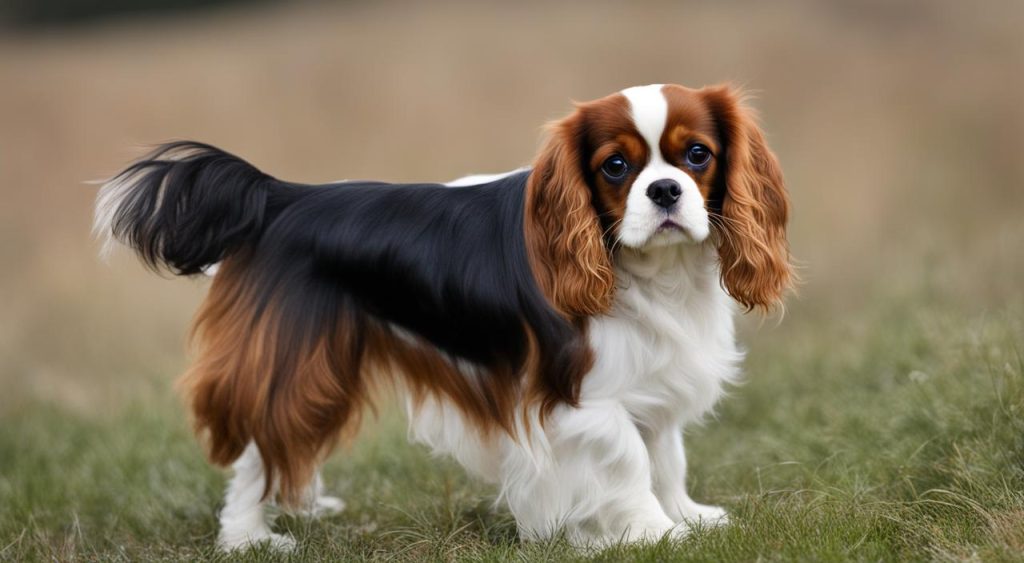The breeding of King Charles Cavaliers has been banned in certain countries, including Norway, due to concerns about the health and welfare of the breed. This ban is an example of breed-specific legislation, which aims to regulate and restrict the ownership, breeding, or importation of certain dog breeds.
King Charles Cavaliers, also known as Cavalier King Charles Spaniels, are popular and beloved pets known for their friendly and affectionate nature. However, they are also prone to a range of health issues that have led to breed bans in certain places.
In Norway, the Supreme Court ruled that the breeding of Cavalier King Charles Spaniels violates the Norwegian Animal Welfare Act. The breed is particularly susceptible to disease and health problems resulting from targeted breeding for specific physical features. Despite efforts to improve the breed’s health through breeding programs, significant advancements have not been achieved in a short period of time.
It’s worth noting that while King Charles Cavaliers are banned from breeding in Norway, the breeding of other breeds, such as English Bulldogs, is still allowed. However, English Bulldog breeders must follow specific breeding guidelines to ensure the health and welfare of the dogs.
Key Takeaways:
- Breeding of King Charles Cavaliers is banned in certain countries, including Norway.
- Breed-specific legislation aims to regulate and restrict certain dog breeds.
- King Charles Cavaliers are prone to a range of health issues due to targeted breeding.
- The breeding ban highlights concerns about the health and welfare of the breed.
- English Bulldogs are also prone to health problems but are not banned from breeding in Norway.
Health Issues in King Charles Cavaliers
King Charles Cavaliers are known to have various health issues, many of which are related to their breeding. A large proportion of the breed suffers from neurological conditions such as Chiari-like malformation and symptomatic syringomyelia. These conditions are a result of the skull being too small in relation to the brain volume, leading to pain and potential paralysis.
Inbreeding in Cavaliers has contributed to these health problems, as well as other issues such as heart disease, luxating patellas, and cataracts. The breeding practices focused on specific physical features have resulted in a limited gene pool, increasing the risk of genetic health issues.
It is crucial for Cavalier King Charles Spaniel owners to be aware of these potential health problems and seek appropriate veterinary care. Regular check-ups, proper nutrition, and exercise can help manage some of these conditions and enhance the overall well-being of the breed.
Health Issues in English Bulldogs
English Bulldogs are no strangers to health issues, with a particular focus on their respiratory system. This breed is prone to respiratory disorders, including brachycephalic obstructive airway syndrome (BOAS), which can cause breathing difficulties.
One of the contributing factors to these respiratory problems is the intentional breeding of Bulldogs for a short and broad head, coupled with a small nose. This characteristic, while highly recognizable, exacerbates their breathing difficulties and puts them at risk for airway obstruction.
However, respiratory disorders are not the only health concerns for English Bulldogs. They also experience other issues such as skin problems and an increased susceptibility to complications during anesthesia.
Inbreeding in Bulldogs has further added to their health challenges. The breed’s small gene pool, resulting from limited genetic variation, may hinder their ability to recover from genetic issues and increase the prevalence of certain health conditions.
It is essential for English Bulldog owners, breeders, and veterinarians to be aware of these health issues and take necessary precautions to ensure the well-being of these beloved pets. Implementing responsible breeding practices and promoting genetic diversity can help mitigate the health risks faced by English Bulldogs and improve their overall quality of life.
Conclusion
The breed bans on King Charles Cavaliers and English Bulldogs in Norway have shed light on the pressing concerns surrounding the health and welfare of these beloved dog breeds. Extensive inbreeding and selective breeding aimed at specific physical characteristics have resulted in a myriad of health problems plaguing both breeds.
While the ban in Norway permits cross-breeding as an alternative, there is a growing call for stricter dog breeding regulations and the adoption of more responsible breeding practices. The focus should shift from prioritizing appearance to safeguarding the overall health and well-being of these dogs.
The ruling in Norway has garnered international attention, potentially paving the way for new dog breeding regulations in other countries. It is crucial for dog owners and breeders alike to place the utmost importance on the welfare and health of dogs and ensure that steps are taken to enhance the overall health of King Charles Cavaliers and English Bulldogs.
Source Links
- https://www.thisdogslife.co/heres-why-norway-is-banning-the-breeding-of-english-bulldogs-and-cavalier-king-charles-spaniels/
- https://www.sciencenorway.no/animal-kingdom-animal-welfare-dogs/why-norway-has-banned-the-breeding-of-cavalier-king-charles-spaniels/2269620
- https://nypost.com/2022/02/02/norway-bans-breeding-cavalier-king-charles-spaniels-bulldogs/





